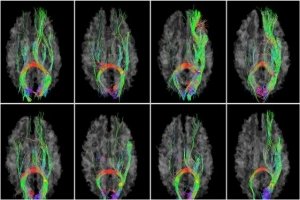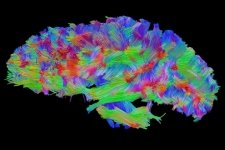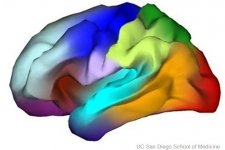Don't ignore neurological symptoms
- Created on Saturday, 14 April 2012 09:31
- Last Updated on 16.01.2013
- Published Date
It is rare for a sports-related concussions to result in a more serious injury such as a skull fracture or hematoma. Nonetheless, it pays to be aware that catastrpohic injuries do sometimes occur as a result of head trauma, and symptoms shouldn't be ignored.
MAYWOOD, Ill. -- When Dr. Irene Gatti de Leon slipped on the ice and bumped her head, she wasn't too concerned.
But two months later, she began to experience weakness in her right leg and right arm while she and her husband were visiting their daughter in suburban Chicago.
So she made an urgent appointment with Loyola University Medical Center neurologist Dr. José Biller, a fellow native of Uruguay whom she has known for years.

Biller ordered an immediate MRI scan, which showed a large subdural hematoma -- a mass of blood on the surface of the brain. With the hematoma compressing the brain, de Leon was in imminent danger of suffering permanent paralysis or cognitive deficits, similar to disabilities caused by strokes.
Biller referred de Leon to Loyola neurosurgeon Dr. Douglas Anderson, who stayed late to perform emergency surgery. Anderson drilled two holes in her skull and drained the hematoma, which was about 2 inches long and 1½ inches thick. De Leon has made a full recovery.
Subdural hematomas are triggered by head injuries that cause blood vessels between the surface of the brain and its outer covering (the dura) to stretch and tear. Subdural hematomas usually are caused by severe head injuries that cause bleeding, which rapidly fills the brain area. But less severe head injuries can cause chronic subdural hematomas. These slow bleeds may not cause symptoms for days or weeks.
De Leon's case "is an excellent illustration of why patients should not ignore neurological symptoms," Biller said.
The case also is an example of how patients can benefit from immediate, same-day care by a multidisciplinary team, Biller said.
Anderson said he collaborates closely with neurologists on brain surgeries he performs for neurological conditions, including hematoma, stroke, multiple sclerosis, epilepsy and Parkinson's disease. "We communicate and work together very closely," Anderson said.
Biller is chairman of the Department of Neurology and Anderson is a professor in the Department of Neurological Surgery of Loyola University Chicago Stritch School of Medicine.
Source: Newswise --April 13, 2012
Questions/comments? contact Jean Rickerson at This email address is being protected from spambots. You need JavaScript enabled to view it.
Brain Health
It is rare for a sports-related concussions to result in a more serious injury such as a skull fracture or hematoma. Nonetheless, it pays to be aware that catastrpohic injuries do sometimes occur as ...
read more...-
CT scans may increase brain cancer risk
Children and young adults scanned multiple times by computed tomography (CT), a commonly used dia...
-
Sub-concussive impacts may affect learning
MINNEAPOLIS – A new study suggests that head impacts experienced during contact sports such as ...
-
Physical activity boosts learning
INDIANAPOLIS – School administrators looking to restructure the academic schedule should consid...




Neuroscience
Athens, Ga.- University of Georgia researchers have developed a map of the human brain that shows great promise as a new guide to the inner workings of the body's most complex and critical organ.
...
read more...-
Does CTE infect neuron to neuron?
NFL Hall of Famer "Iron Mike" Webster's life ended in 2002 when he suffered a heart attack at age...
-
Progesterone seems to protect neurons after injury
It is not yet known why girls suffer concussions at a higher rate than boys. The most prevalent...
-
Amino acids may restore concussion's chemical imbalance
Concussions are often called the "invisible" injury because they are usually not detectable by t...
Resources
- School professionals play an important role in the health of all students. Recognizing the signs and symptoms of concussion is important, as is managing their return to school ...
- CDC's Concussion Training for Clinicians
-
Concussion Education Video Programs - Free and Easy
Parents, athletes, coaches and medical professionals have access to concussion education created...
-
New concussion guidelines for team physicians
INDIANAPOLIS – Team physicians who assess and treat athletes suspected of concussion have new ...
quick links
Latest News
Concussions Occur...
...in Any Sport
REMOVE athlete from play
REFER to medical provider
REST no sports, no texting/TV
RETURN only with doctor's OK
Source: Children's Hospital Boston, Sports Concussion Clinic


































